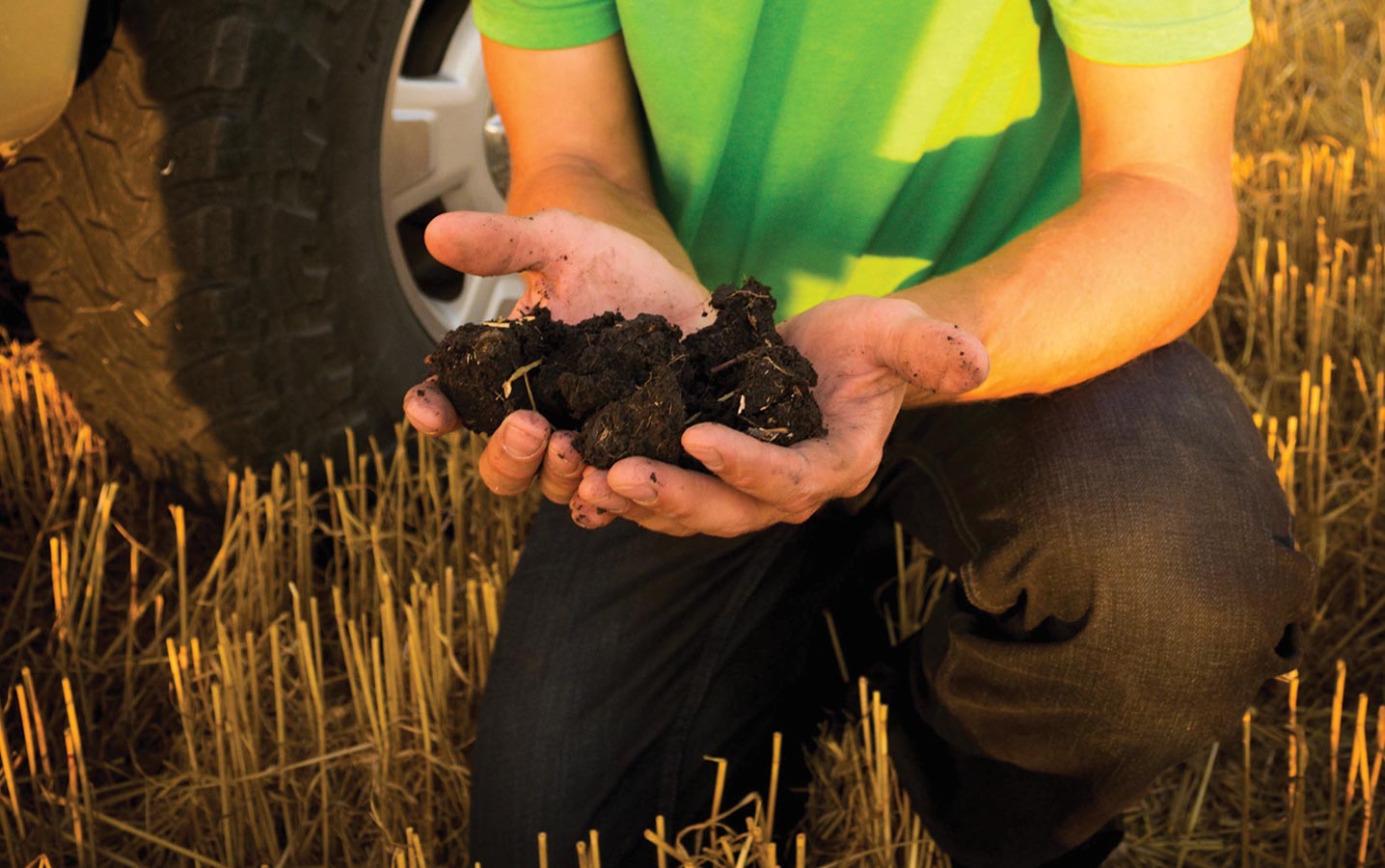Do you know your soil’s character?
Harvest operations may dominate farmers’ thoughts in September, but keep in mind the importance of fall soil tests — including those that look beyond fertility.
Tests for electrical conductivity (EC), pH, cation exchange capacity (CEC) and organic matter may get short shrift, but shouldn’t be taken lightly or dismissed.
“They may be secondary in farmers’ minds, but they are very much primary as far as how that field is going to perform,” says John Heard, Manitoba Agriculture’s soil fertility extension specialist.

Electrical conductivity
EC tests quantify a soil’s salinity. Results are often given in deciSiemens per metre of soil. For each extreme, soils with an EC of lower than two dS/m is
“non saline” and fields with an EC higher than eight are “severely saline”.
“When planning rotations on a saline field, it may help to know that soybeans, dry beans and even corn are more sensitive to salinity than crops like cereals and canola,” says Heard.
Wet years can trigger future salinity problems, as Agriculture and Agri-Food Canada research scientist Alan Moulin points out. In a wet year like this one, salts will leech down through a soil profile.
“However, when the water table comes up with prolonged rainfall plus maybe a hot spell, you’ll get salts moving to the surface,” Moulin says. “Salinity may not be significant in the spring, but it might become an issue later in the year.”
Tile drainage is becoming the most common and effective way of managing salinity levels.
But for tile drainage to remove salinity, a field also needs surplus rain to flush it through, notes Heard. “In dry years, we don’t gain much ground. If the crop is using up all the water it gets, then we don’t have the excess to do the flushing that’s required.”
pH
Soil pH measures acidity or alkalinity, and a 7.0 on the pH scale is considered neutral.
A 2013 Alberta Agriculture estimate said about 6.3 million acres of Western Canada soils had a pH of 6.0 or less, with another 8.5 million with a pH from 6.1 to 6.5.
Canola yields on acid soils with pH below 5.5 can be substantially increased by lime application, according to the Canola Council of Canada.
Heard points to challenges for both low and high pH soils.
“When we have acid soils — when they drop down to maybe 5 — we get very much reduced phosphorus availability, possible aluminum toxicity and rhizobium bacteria don’t work very well,” he says. “With high pH, nutrients like phosphorus are bound by calcium and magnesium, but this phosphorus is much more available than if bound by iron or aluminum in acid soil.” That is why he promotes banding phosphorous, especially on high pH soils.
Soil pH can also affect herbicide breakdown. “Some herbicides are more persistent at high pH, and some are more persistent at low pH,” notes Heard. “So farmers should be aware that if they’re seeing some herbicide carryover, sometimes it can be pH related.”
Acidity can change slowly over time, particularly if you’re using ammonium-based fertilizers, says Moulin. Cultivation can also lead to a gradual decrease in pH.
Cation exchange capacity
Cations are nutrients with positive charges. Calcium, magnesium and potassium are the biggies. Such cations are held by the negative electrostatic charges on clay particles and organic matter. Fall application of anhydrous ammonia is held in the soil as a cation too, as the ammonium ion.
“Cation exchange capacity (CEC) gives you an indication of the ability of your soil to hold on to and replenish some of those nutrients,” Heard says.
CEC with a value of less than 10 indicates a sandy soil, between 10 and 20 is a loamy type soil, 20 to 30 is a clay loam and more than 30 is a clay soil.
A farmer will already know the soil type in each field, but this is useful information for an agronomist who doesn’t know the soil and has to make management recommendations. A sandy soil, for instance, isn’t the most suited to hold cations, and applied nutrients like potassium and anhydrous ammonia won’t be held as well. On the other hand, more clay means greater water holding capacity in the soil, and seed-placed fertilizer toxicity will be less damaging.
“Herbicide residue carryover is less of a problem with high cation exchange capacity,” adds Heard.
Organic matter
Organic matter is a storehouse of nutrients and links to soil productivity. “We know that as organic matter increases, yield potential often increases,” Heard says. “Part of that is because organic matter helps store more water, so you tend to have a higher yield potential.”
On top of improving water holding capacity, organic matter contributes a lot to soil structure and the ability of the soils to have good aggregation, allowing for better water infiltration and a reduction in crusting and erosion.
Organic levels aren’t changed much or quickly. About every one percent of organic matter represents about 20,000 pounds of organic matter in an acre.
“It can be degraded or reduced through excessive tillage and fallowing, but most researchers say building organic matter is a very slow process,” says Heard, adding that a farmer’s time is better served by maintaining or limiting degradation.
Moulin adds that when organic matter is mineralized, it releases nitrogen which is nitrified from ammonium forms to nitrate that goes to the plant.
Decisions on how to improve soil organic matter depends on what the deficiency is. If the goal is to help with nitrogen and phosphorus availability, fertilizers are the most efficient and economical way of dealing with it.
“However if you’re dealing with issues related to salinity or cation exchange capacity, one option would be to use cattle manure,” says Moulin. “The other option in that respect would be to set up a rotation that puts a lot of organic matter back into the soil — forage crops or green manure, for example.”
These four tests don’t need to be performed regularly as they remain rather static and change only slowly, if at all, especially CEC and organic matter. “I would consider them good characterizations for a field, but not something that is routinely measured,” Heard says. “They’re not going to vary to the same extent as nutrient levels would.”





